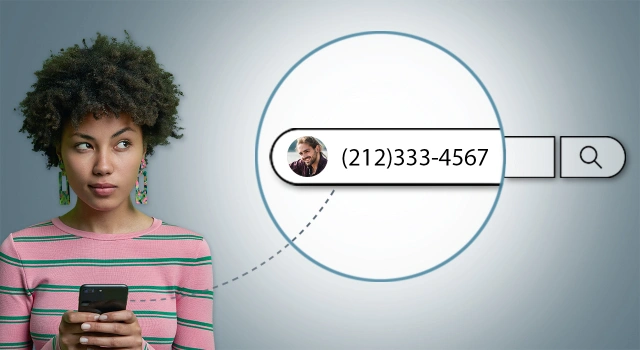Catfish Phone Number Lookup – Ultimate Guide To Spot A Catfish

In the age of social media and dating apps, meeting new people has never been easier – or riskier. The anonymity of the Internet has created a breeding ground for scams and deception. And catfish, where people use a stolen or fabricated persona to manipulate others into a relationship, is one of the most common threats. But what if you could verify their identity with just a phone number?
If you’re wondering whether your dating match is real, suspecting they might be too good to be true, or simply want to protect yourself in online dating, this guide is here to help. We’ll introduce the best tools for a catfish phone number lookup, like those used by the hit show ‘Catfish’ on MTV [1]to unmask romance scams, and also some simple yet effective methods for spotting red flags.
Table of contents
What is catfish?
Catfish is a deceptive act when a person pretends to be someone different online to trick or attract others. Some catfishers steal a real person’s identity, including their name, photos, location, and job, to pose as someone else entirely, while others may invent a fictional persona with a fake name and elaborate backstories to lure their targets. Though catfish is commonly associated with online dating, it can target anyone looking for meaningful connections, whether romantic, friendly, or professional.
How to do a catfish phone number lookup
Phone numbers are an important clue in tracing someone’s real identity. With the right tools, you can gather related information to determine who the person behind the screen is.
For a US phone number, we recommend doing a quick caller ID lookup to know the owner’s real name and digging deeper through a background search – if you want more in-depth information like the person’s job, possible criminal & traffic history, and more. Got an international phone number? You can start from Method 3.
1. Do a caller ID lookup (only for US phone numbers)
Caller ID, also known as CNAM, is the name displayed on your screen when receiving a call. If you wonder whether your potential date is using a real name, run their phone number through our Super Easy caller ID lookup tool. It draws from phone carriers’ databases and crowdsourced contact lists to identify the owner behind a phone number efficiently.

No need to register. Simply input a phone number, and you might find the potential caller, location, phone type, and carrier.
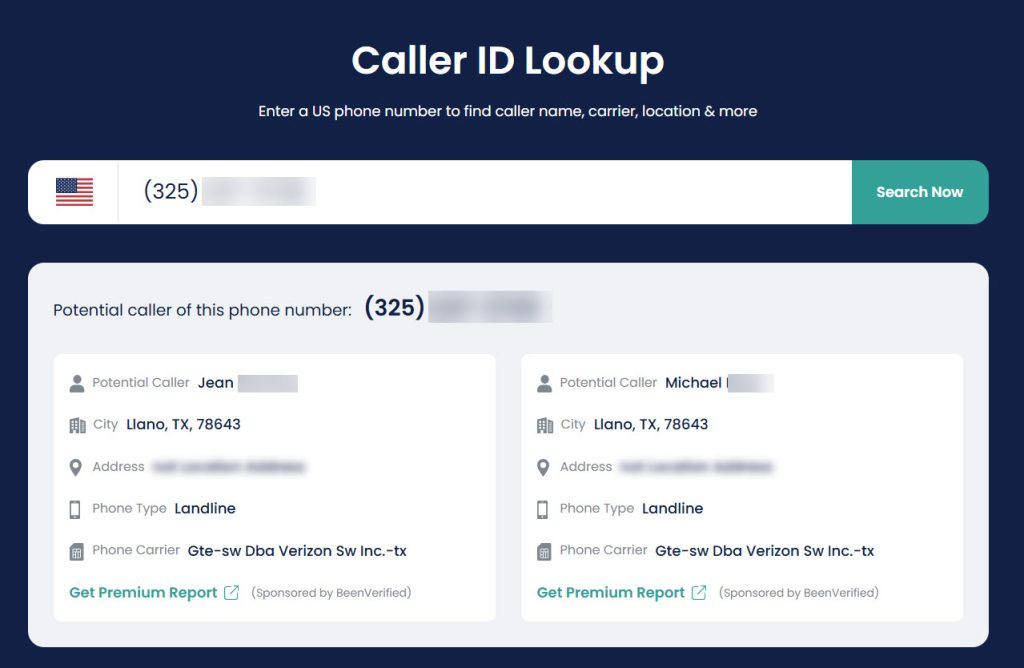
What’s more, be cautious of VoIP numbers or those from carriers like Onvoy, Bandwidth, or Level 3. A VoIP (Voice over Internet Protocol) number operates via the Internet, enabling users to make and receive calls or texts without being tied to a physical location or device. Users can select area codes from anywhere, and it’s easy to set up with little personal information. This anonymous nature makes a VoIP number challenging to trace and a favorite tool for scammers.
2. Perform a dating background search (only for US phone numbers)
In the MTV show Catfish, the hosts use various Internet research tools to catch fraud, including reverse phone number lookup, image search, and background searches. These tools scour a massive amount of public records and digital footprints, helping you verify people you meet in everyday life.
BeenVerified and Spokeo are two standout tools featured in the show. With extensive data coverage, ease of use, and versatile search options, they are our top choices for background checks on a prospective match or finding people like friends, family, acquaintances, and old classmates.
You don’t need to be tech-savvy to use these tools. Simply enter a phone number and let it do the job. You can also search a full name, an email address, or the person’s dating app username, as different search inputs can yield varied results, possibly bringing you closer to discovering the person’s identity.
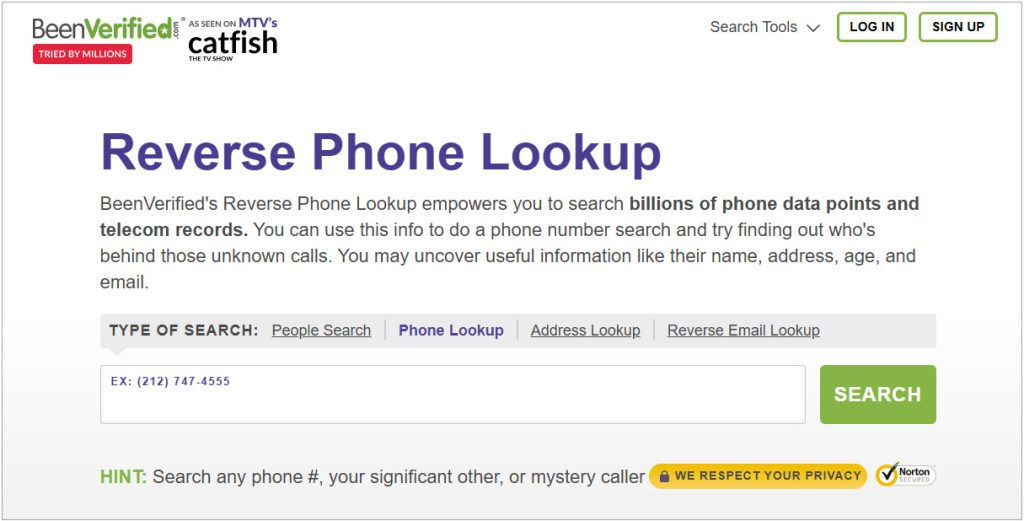
It will start scanning wide-ranging sources such as government databases, social media, blogs, forums, news articles, and so on. After several minutes, you’ll receive a full report (available with subscription). The results may vary by service, but they typically include the phone number owner’s name and a trove of associated information.
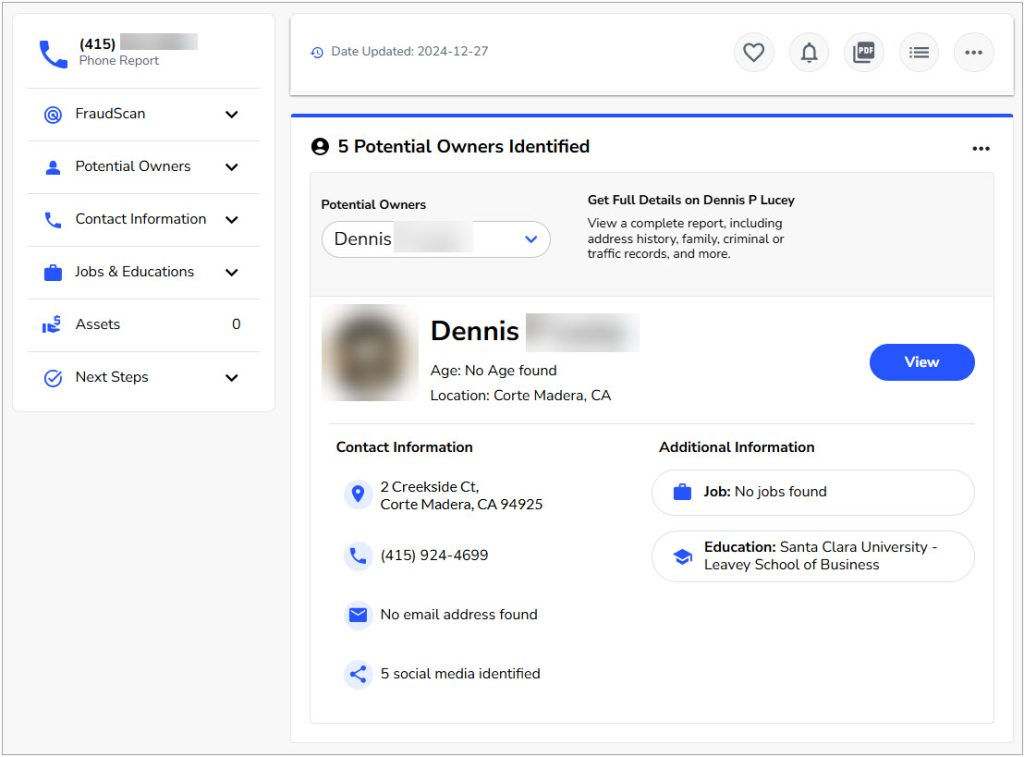
By analyzing the phone number type, search frequency, and user feedback, it can effectively help identify spam phone numbers. So if you see a spam alert, it’s not worth your time tracking further.
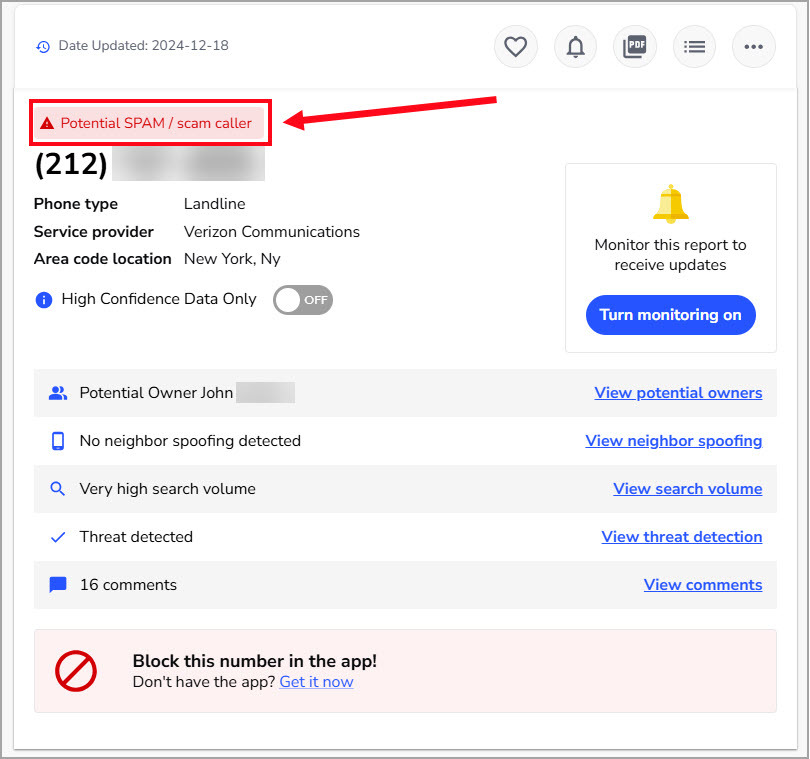
To learn more about the potential owner, you can unlock an in-depth individual background report. See the sample from BeenVerified below. It may include:
- Personal details such as name, aliases, age, location history, and possible photos.
- Contact information including possible phone numbers, email addresses, address history, and social media profiles.
- Additional insights such as their possible job & education, relatives & associates, court records (criminal and traffic history, bankruptcies, licenses), and possibly owned assets like vehicles and properties.
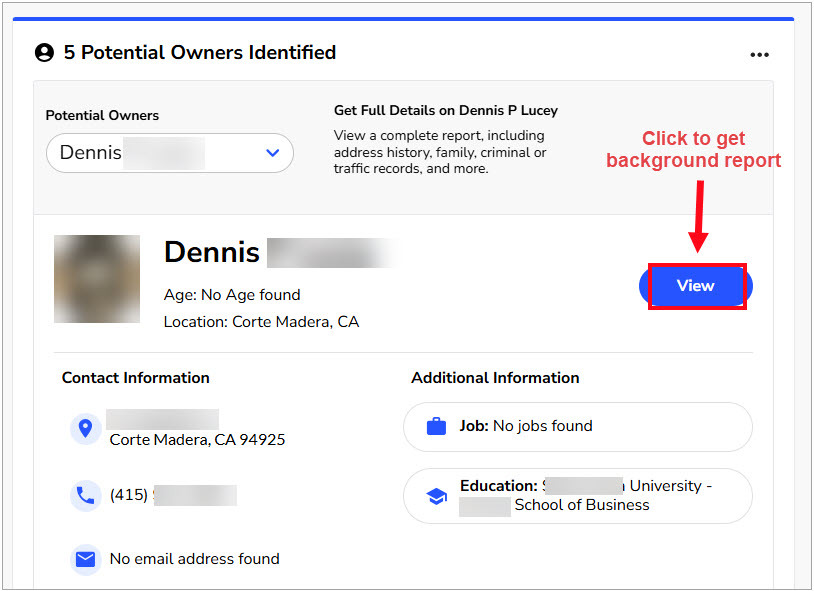
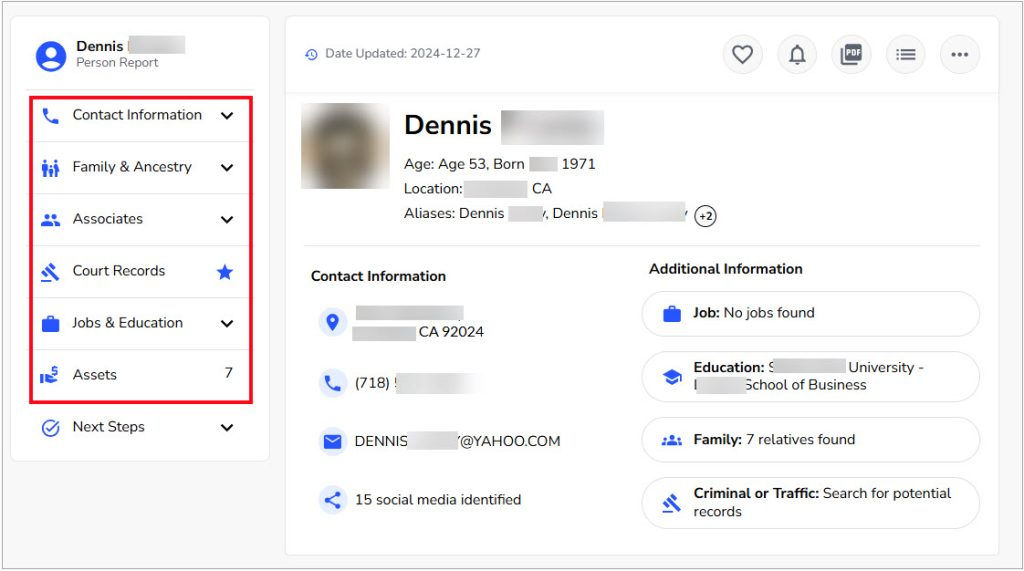
While BeenVerified excels in wide data access and straightforward overviews, Spokeo offers exclusive data points, such as personal interests derived from marketing data, going beyond just the standard records.
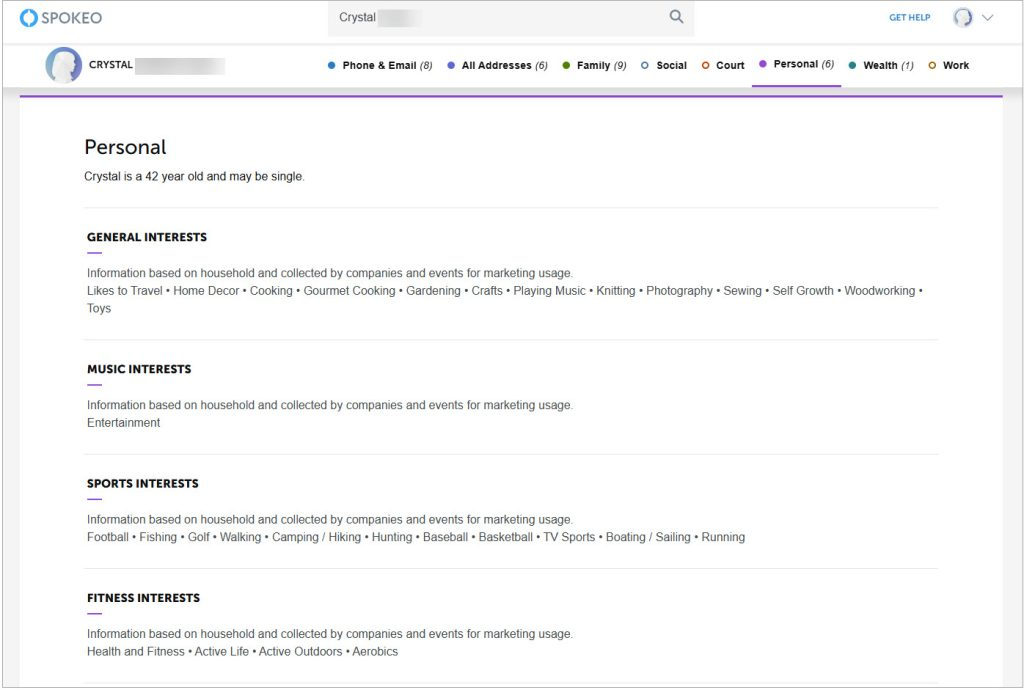
The wealth of details will give you a clearer picture of the person you’re interacting with. Compare your findings with what the person has told you:
Related article: How to Find out if Someone is Married
You can also ask them relevant questions to gauge their reactions. Each inconsistency you uncover could contribute to the evidence, helping you decide whether to trust the person or dig deeper.
💡 Pro Tips: Many details in the reports come directly from public portals and are accessible to everyone who knows how to obtain them. For example, criminal & traffic history is normally maintained at the county clerk’s office. Professional licenses can be verified at state or federal agencies. If you’re willing to dig manually, refer to our hands-on case study on acquiring these data.
3. Look up the number on a search engine
A phone number lookup is as simple as searching for anything else. By searching the number directly on Google, Bing, or Yahoo, you could track where it appears online.
If the phone number has been reported spams, it may surface in scam-related forums or discussions, or complaint boards.

Regular phone numbers usually turn up results like directory listings, social media profiles, blogs, or public pages. However, if the number has little digital presence, results may be limited, or none at all.
You can tweak your search query for refined results. For instance, enclose the number in quotation marks like “(222)-123-5567” or try different formats with or without brackets or dashes, like “222-123-4567” or “2221234567”. You can also broaden your search on the person’s full name and state (if known).
Although privacy-conscious people may deliberately avoid leaving traces on the Internet, finding absolutely nothing on a name or number online could signal a fake identity.
4. Trace their digital footprints on social media
If you have the person’s phone number, you can sync their phone number with various social media apps and see if it links to a profile. Social media is an invaluable resource for learning about an online date, offering glimpses into their personality, interests, and lifestyle, beyond the polished personas presented on dating platforms.
Here’s how it works: Save the phone number to your phone’s contact book and upload it with a social media app. You can usually turn on the sync contact option via Settings.
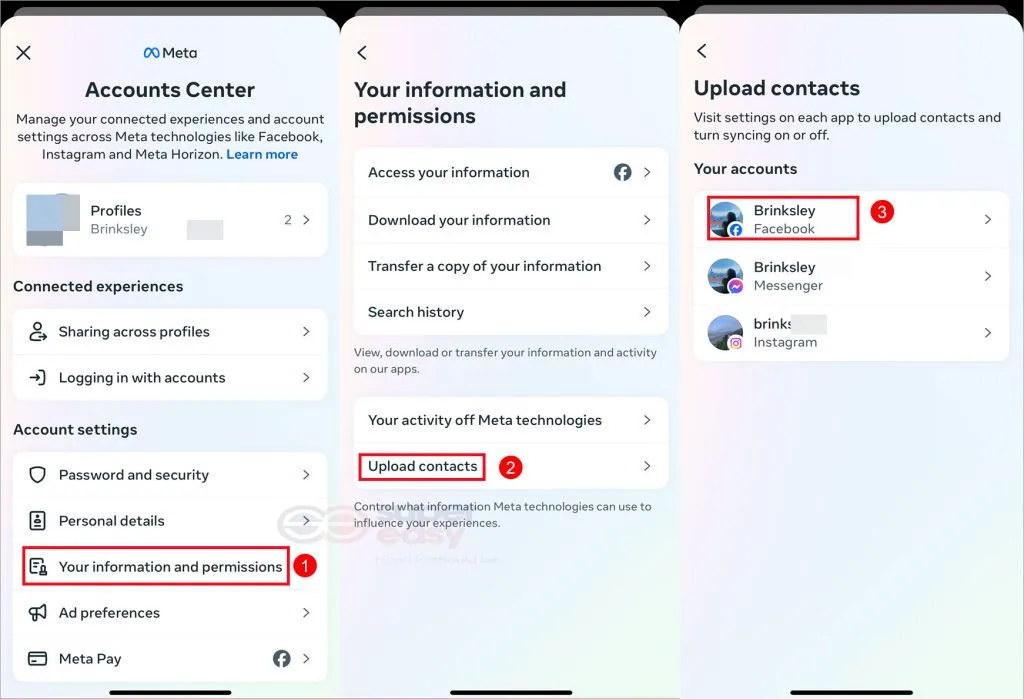
Explore major platforms such as Facebook, Instagram, and Snapchat, as well as lesser-known ones, such as music, cash apps, or others you suspect the person could be using. Catfish may be cautious on larger networks but slip up on smaller ones.
Check the found profiles for inconsistencies
If you’ve found a profile, examine it closely for cues. Start by determining whether it’s a fake social media account created specifically for deception. These accounts may look real at first glance, but the lack of depth and detail will give them away.
Typically, catfish’s fake profiles have a short history, few followers or friends, and limited posts or photos, mostly professional-looking pictures rather than casual selfies or photos with their friends. Since catfish only have a handful of pictures of the person they’re impersonating, you may notice they post the same pictures they’ve shared with you but no more fresh content.
💡 You can verify the authenticity of images through a reverse image search, as many catfish rely on fake or stolen images to build their false identity.
Put your detective gear on and focus on the details. For example, if you find a Facebook profile with only a few friends, many of whom look fake with blank profile details or come from unrelated locations, these connections are likely false. A real profile generally has more substance and consistent connections.
Yet, spotting fake profiles is just one part of the process. Even if a catfish operates a crafted persona, they may leave real digital traces elsewhere. So if you discover a “hidden” account that reflects their true self, look for discrepancies between the person’s claims and what the profile reveals. Does it indicate the same person you’ve been speaking to, or do they look significantly different? Does their location, job, or interest match what they’ve told you?
Keep in mind that not everyone actively uses social media and limited activity doesn’t necessarily mean someone is catfishing. You should assemble every discovery to make an informed judgment.
More effective methods to spot a catfish
Apart from performing a dedicated search on the phone number, there are various strategies you can use to outsmart a catfish.
1. Examine the image thoroughly
Reverse search the image to find its source
Catfish often use fake or stolen photos to appear alluring. A simple reverse image search with tools like Google Images, TinEye, and Yandex can help you trace the image source and determine whether it’s taken from elsewhere.
To use these tools, go to their website, upload an image of the potential catfish (or paste its URL), and run the search.
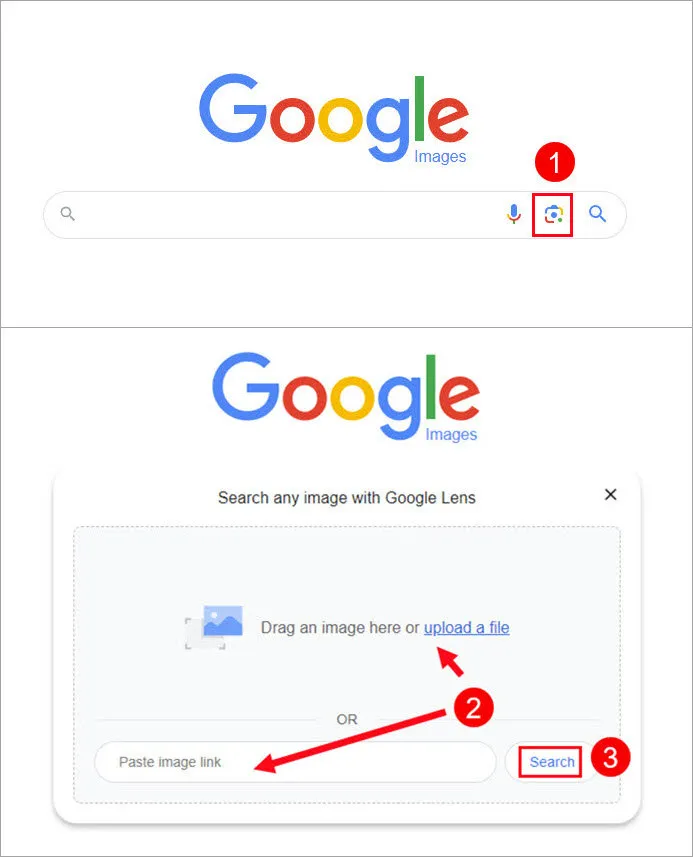
Then analyze where the image or similar ones appear: if the picture is real, it may not appear on multiple sources, except for the person’s other online profiles. Check if the profile belongs to the person or if it’s an original account that has been copied. If the result leads to a stock photo website or unrelated accounts, the picture is likely stolen.
Check the image details
Apart from verifying the image source, you should check the details in the picture to see if anything is off. Are there identifiable elements in the photo, like a landmark, store, amusement park, or other contextual clues that confirm or contradict the person’s location? Does it accidentally expose a logo that suggests a workplace different from their claimed job? Or are there any oddities, such as a tattoo or piercing that randomly appear or disappear in different images?
Moreover, you can inspect the image metadata (EXIF data), which stores the photo’s creation time, GPS coordinates, and camera settings. Here’s how you can access this information on different devices:
On iPhone
Open an image in your gallery, then tap the Info button (an “i” in a circle) under the image.

On Android
Find the photo you want to view in the Google Photo app. Then swipe up on the photo, or tap the three-dot menu icon in the top right corner. You’ll see the photo’s metadata.

On Windows
Select the file, then right-click and choose “Properties” from the pop-up menu. Click the “Details” tab to view it.

On Mac
Select the image file, press Command+i together to open Inspector, and view GPS details under the Info > GPS tab.

Detect AI-generated images
Many catfishers now use AI-generated images or combine them with real photos to create a convincing profile. Those AI images are, in fact, quite recognizable, often containing obviously unnatural and strange elements or having telltale signs such as misspelled text, inconsistent perspective and lighting, overly glossy appearances, and so on. Hands and fingers are also a common giveaway that AI often struggles with: you may see extra fingers or awkwardly positioned limbs.
Additionally, you can use an AI image detector like Sightengine or Hive to identify such images. They specialize in spotting deepfakes and synthetic images that might not be immediately visible.

For a definite test, you can request a unique photo from the person, like holding a specific object or doing a simple action. This can practically reveal whether the person behind the images is genuine or fake.
2. Use an IP logger to track general location
When it comes to tracking a person’s location, many people think of tracing the IP address. An IP address is a unique virtual address that identifies devices on the Internet and may indicate a user’s general location in real time. In a real user story, capturing the IP address allowed him to verify a Facebook friend’s location and discern possible scams[2]. To get the person’s IP address, use an IP logger like Grabify.
- You need to generate a tracking link on the Grabify website. Enter a URL to a post, a video, a meme, or anything that might interest the person.
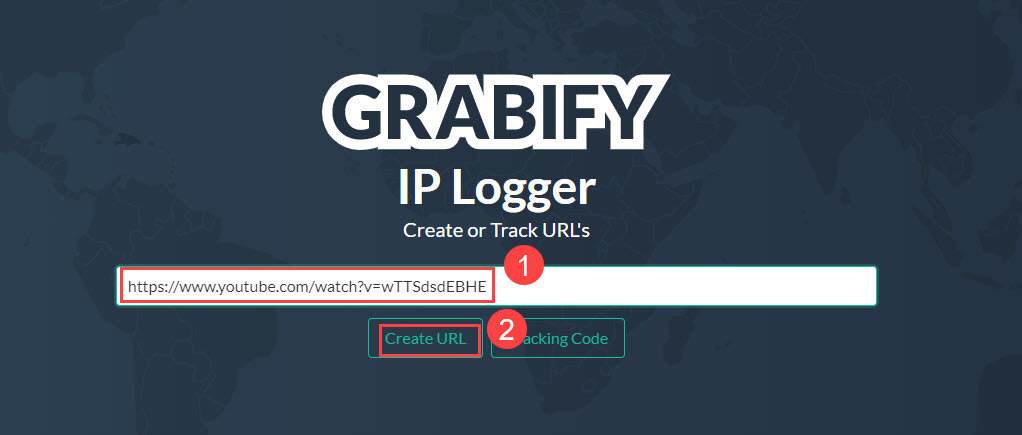
- Copy the New URL, or click View Other link Shorteners to get other link formats that will look more normal.
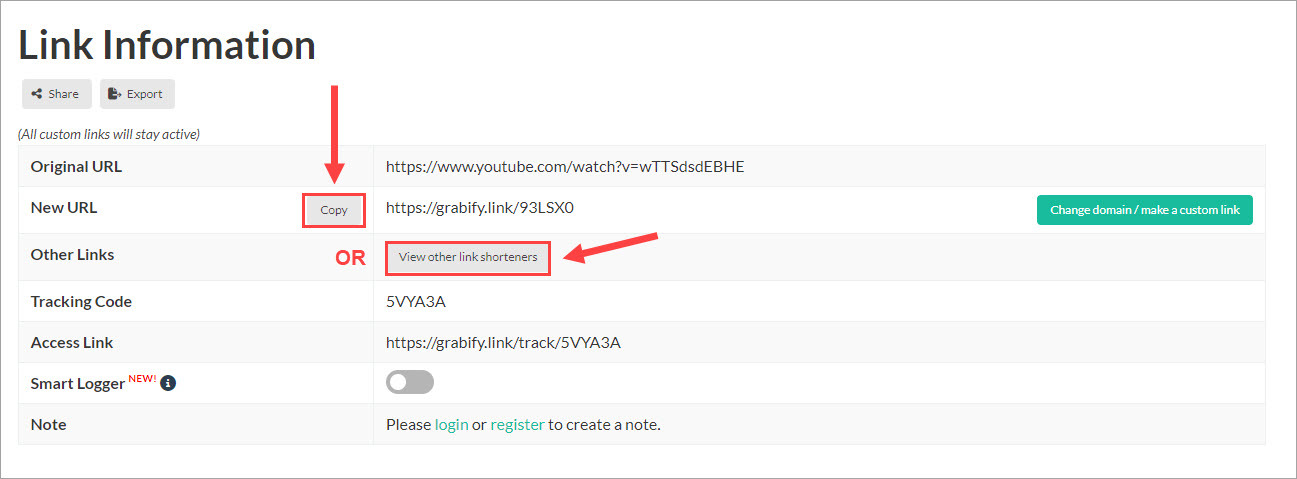
- Send the link to the person in question and say something to lure them to click it.

- When they click the link, Grabify will log their IP address.

- Copy the IP address and search it on our IP Address Lookup tool. It will show you which city the IP address is located.
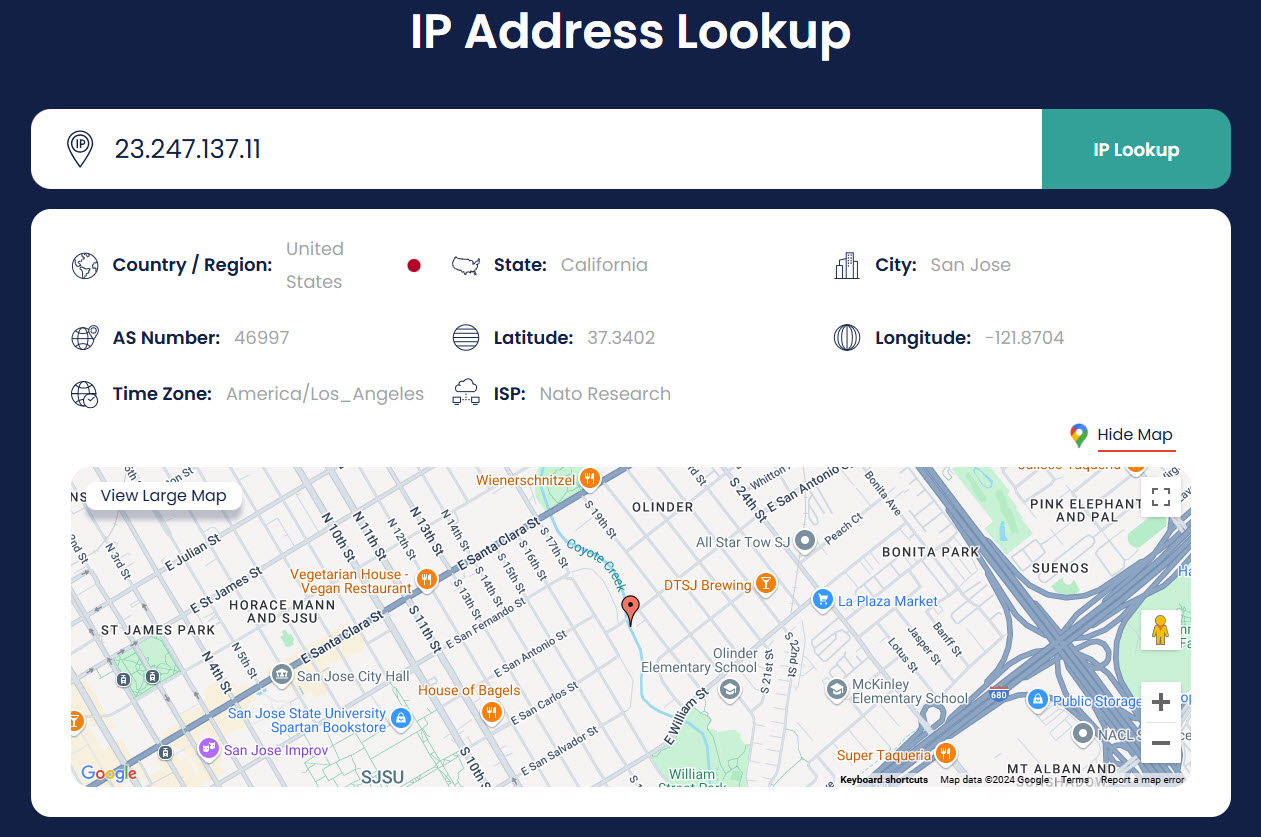
3. Call the person from another phone number
This is a simple trick shared by a user in a forum discussion[3]. If you have the person’s phone number, try to call him/her from another phone number they won’t recognize. Start by casually introducing yourself like “Hi, this is random name calling” or asking “Hi, is this made-up name?”, pretending you’re reaching someone else. Many people are less guarded when answering calls from unknown numbers and may instinctively respond with their real names.
Watch out for these warning signs
Many catfishers aren’t as hard to catch as they might seem, and sometimes all it takes is trusting the guts. Below we’ve rounded up 5 key warning signs to spot a catfish.
1. They always refuse to video call or meet in person
A catfish will avoid situations where their fake identity could be compromised, such as meeting up in person or video/phone calls. Of course, not everyone is comfortable jumping into video calls or real-life meetups, especially at the early stages. However, if the person keeps refusing to show their face – even after repeated requests – or coming up with excuses over time, it should sound an alarm.
2. They seem too good to be true
Catfish typically create an idealized persona to reel in victims. They may look stunningly gorgeous, have a high-flying career, lead a luxurious lifestyle, and even share interests or life experiences that are highly in common with you. This will give an illusion that they’re the perfect soulmate. While it’s natural to be drawn to someone impressive, remember the saying: if it seems too good to be true, it probably is. A bit of skepticism is essential to protecting yourself.
3. They fall in love too quickly
“The one and only” sounds so tempting, but that’s not always a good sign when you barely know each other for long. A healthy relationship takes time to develop. If the person pushes the relationship fast or makes grand promises like marriage right away, after just a few interactions, consider it a red flag.
Catfish also want to manipulate you emotionally. They may shower you with excessive compliments, romantic attention, and sweet words, all intended to distract you from the warning signs.
4. They ask you for money
For most catfish, the ultimate goal is money. Once they’ve earned your trust, you may suddenly find themselves in urgent scenarios where they need money. For example, they might claim their friend or family member is in the hospital and needs financial help for medical bills. Or they’re short on budget to buy a plane ticket to visit you. No matter how small the amount is or how convincing their reason sounds, never send money to someone you’ve only met online or whose identity you can’t confirm.
5. Their stories don’t add up
If you pay close attention, you’ll find a catfish can easily contradict themselves and get their stories mixed up. For example, they might say they’re from an English-speaking country but frequently make grammatical and spelling errors. Or they tell you they’re at work but later say they were laid off months ago.
Don’t hesitate to ask follow-up questions. Genuine people are usually open to providing details, while catfish might avoid your questions or give contradictory answers.
What to do if you’re catfished
If you realize that you’ve been catfished, the first thing is to break off all communication with the person. Don’t respond to their messages or phone calls, so they cannot continue to manipulate or scam you. To protect yourself, here are a few more things you can do.
- Report the person to the platform you met them, whether it’s a dating or social media app, and also their other accounts (if you know any). Most major platforms allow users to report suspicious accounts, and this will prevent other people from falling victim to the same scammer.
- Contact local law enforcement if you’ve suffered financial loss or feel threatened in any way. They should be more professional at handling online frauds and scams. Make sure to keep records of your interactions such as screenshots, emails, and messages, and save evidence you’ve gathered from the investigation.
- Secure your accounts if you’ve shared sensitive information such as passwords, addresses, or financial info. Monitor your online or bank accounts for any suspicious activities or change passwords for extra security.
- Seek emotional support from your friends, family, or a therapist. Falling victim to catfish can be emotionally distressing. Sharing your experience and feelings with someone you trust might help you go through what happened and regain confidence.
Conclusion
That’s all the methods and tips for catfish phone number lookup. While it’s easier for people to hide their identity in the digital age, there are also various powerful resources to uncover it. No matter you have a username, a phone number, or a picture, it’s possible to discover related traces.
Remember, your safety and well-being are the top priority. If something feels off, whether your online dates refuse to meet or request money unreasonably, trust your intuition and walk away.
- Catfish: The TV Show. (2012, November 12). Wikipedia. Retrieved December 30, 2024, from https://en.wikipedia.org/wiki/Catfish:_The_TV_Show↩
- Internet Marketing [Mo Goulet]. (2012, November 13). How to catch a scammer on Facebook. [Online forum post]. Warrior Forum. https://www.warriorforum.com/main-internet-marketing-discussion-forum/711475-how-catch-scammer-facebook.html↩
- r/catfish [-wholesome-bean-]. (2019, November 24). A Guide to Finding a Catfish. [Online forum post]. Reddit. https://www.reddit.com/r/catfish/comments/e0vfhm/a_guide_to_finding_a_catfish/↩


 View all of Brinksley Hong's posts.
View all of Brinksley Hong's posts.
